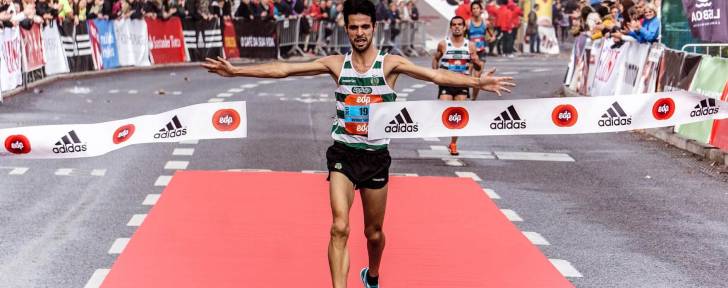Le pic de forme en course à pied
Par Anthony Publié le 24/09/2025 à 18h55 Temps de lecture : 2 minutes
La notion de pic de forme en course à pied vous parle ? Maîtriser les plans d'entraînement pour progresser, c'est bien. Mais comprendre l'intérêt du pic de forme et comment l'atteindre lors de la compétition cible, c'est mettre toutes les chances de succès de son côté. Dans cet article, nous verrons ce qu'est un pic de forme, comment l'atteindre et surtout comment intégrer cette notion dans son entraînement. Avant cela, je recommande de lire mon article Comprendre l'entraînement pour mieux appréhender cette notion et rendre vos entraînements encore plus efficaces.
🤔 Qu'est-ce qu'un pic de forme en course à pied ?
Lorsque l'on s'entraîne pour progresser, on souhaite être au meilleur de sa forme le jour de la compétition cible. Cela nécessite d'atteindre ce que l'on appelle communément le "pic de forme" : le moment où tous les signaux sont au vert. L'entraînement nous a progressivement amenés à un très bon niveau, on sent que le résultat peut être excellent… et c'est là qu'il ne faut pas se tromper. Entre atteindre son pic de forme et sombrer dans la fatigue, la frontière peut être mince.
Bien gérer les derniers jours ou semaines avant la course vous donnera l'impression d'avoir des ailes le jour J ! Ce sentiment est indescriptible et extrêmement agréable. Pouvoir reproduire facilement les allures qui semblaient difficiles à l'entraînement renforce la confiance pour affronter les moments difficiles. Et puisque le mental joue un rôle majeur dans la performance… vous mettez toutes les chances de votre côté.
🎯 Comment atteindre son pic de forme ?
La principale difficulté est de gérer correctement l'entraînement. L'erreur fréquente est de vouloir doubler les efforts dès le début de la préparation, par enthousiasme pour la course à venir. Cependant, un plan bien construit ne nécessite pas de forcer dès le départ. Trop d'intensité précoce peut provoquer des blessures ou atteindre le pic trop tôt. Le but est de progresser progressivement pour être au meilleur niveau le jour de la compétition.
Un plan progressif permet d'augmenter progressivement la forme. Dans le dernier cycle, vous devez sentir votre forme monter et les sorties devenir de plus en plus faciles. En laissant de côté la fatigue grâce à un bon tapering, vous arriverez en condition idéale pour battre vos records personnels !
📅 Gérer la dernière semaine avant l'objectif
La phase cruciale du plan pour atteindre le pic de forme se situe en fin de cycle. À l'approche de l'objectif (14 jours pour un marathon, 10 pour un semi, 7 pour un 10 km…), il est temps de réduire la charge. L'objectif n'est plus de progresser mais de maintenir le niveau tout en minimisant la fatigue. La forme est le résultat du niveau et de la fatigue, il faut donc rester frais.
⚡ Maintenir le pic de forme sans repos complet
Il s'agit de réduire le volume d'entraînement tout en maintenant l'intensité. On joue sur le nombre de répétitions et le temps de récupération. Les séances sont plus courtes que lors des grosses semaines et les temps de repos plus longs. On continue à travailler aux allures habituelles mais sans accumuler la fatigue. Cette phase s'appelle le "tapering".
Pour plus de détails, voici des ressources utiles :
- Dernières séances avant un semi-marathon
- Derniers entraînements avant un marathon
- 10 erreurs à ne pas commettre avant une compétition
⚠️ Ne cherchez pas à être en forme tout le temps !
On ne peut atteindre un pic de forme que 2 à 3 fois par an. Il est donc important de planifier 2 à 3 objectifs par an. Un pic dure quelques semaines, profitez-en pleinement. Sur 5 ou 10 km, vous pouvez faire plusieurs courses. Sur semi ou marathon, c'est un "one shot" : aucune erreur n'est permise.
⏳ Entre deux pics de forme, gérer la période
Après un pic et ses compétitions, le corps a besoin de récupérer. Même si vous continuez à vous entraîner, la forme diminue naturellement. Les sensations seront moins bonnes lors de courses intermédiaires, mais il faut rester patient, continuer un entraînement régulier et planifier le prochain objectif quelques mois plus tard.
Personnellement, j’évite les compétitions majeures pendant deux mois après un pic pour ne pas perdre le plaisir des sensations. Cela permet de préparer efficacement le prochain pic de forme et d’arriver en pleine réussite.
Cette explication sur le pic de forme vous semble utile ? Elle vous aidera à planifier vos objectifs et à tirer le meilleur parti de vos périodes de forme maximale !







